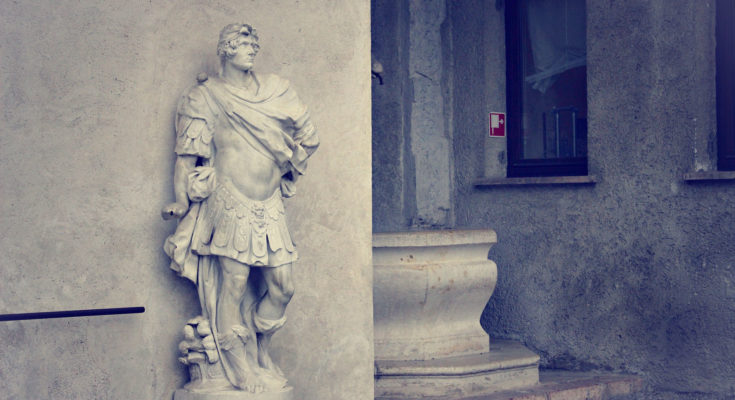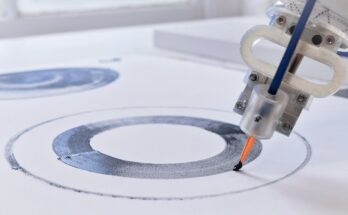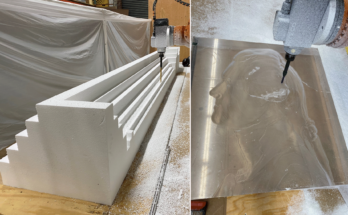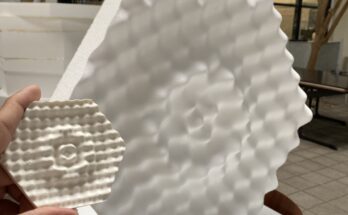What links hip-hop music with robotic machining? The RapCaviar Pantheon project from Spotify and NeoSet Designs used RoboDK to make significant sculptures.
Back in the days of ancient Rome, sculptures were a way to celebrate and immortalize important people. A sculpted bust of a family member, for example, showed that a family had respect for their ancestors. Revered members of society were often turned into full-sized sculptures in stone or marble.
The practice of sculpting notable figures is still alive and well… and it’s being pioneered by none other than music streaming service Spotify!
In collaboration with Neoset Designs, Spotify’s project titled RapCaviar Pantheon immortalized three breakthrough rap artists from 2017 using robotic machining. Rap artists Metro Boomin, 21 Savage, and SZA were all sculpted into a material with the appearance of stone.
As Spotify’s video explained:
“To cement RapCaviar’s reputation as the platform that breaks new artists we honored the three new breakthrough artists of the year with real-world sculptures created by robots.”
You might now be wondering what RapCaviar is…
What is RapCaviar?
Basically, RapCaviar is the name of a playlist on streaming music service Spotify. However, it is much more than that.
The RapCaviar playlist is — in Spotify’s words — “The most influential playlist in hip-hop.” Some playlists on Spotify have a huge effect on the popularity of new and established artists. RapCaviar has over 11 million subscribers and it has even spawned a live tour. Rap artists who are included in RapCaviar are either extremely popular before they are added to the playlist or they will be after they are added.
(By the way, if you are a rap and/or hip-hop fan, I’m aware that I’m probably incorrectly using these two terms interchangeably… I’m only doing it because Spotify also does this.)
The RapCaviar Pantheon Project 2017
Spotify first ran the RapCaviar Pantheon project in 2017 in collaboration with Neoset Designs, advertizing agency Special Guest, and design company Proptogroup.
Just as the statues in Ancient Rome were used to honor important figures in Roman society, the RapCaviar Pantheon project used robotic machining to honor the three breakthrough rap artists of 2017.

The three sculptures were exhibited in December 2017 in the Brooklyn Museum.
As the playlist’s then curator Tuma Basa explained:
“We’re treating our artists with the importance that Ancient Rome treated its gods. Metro, SZA and 21 all proved this year that they’re here to stay. Their music is forever so why not immortalize their likeness? Greco-Roman Respect Style!”
You can read about the artists in RapCaviar Pantheon 2017 on Spotify’s case study of the project.
Spotify has since re-run a version of the project in 2019, showcasing four new artists and a different modern production method, this time using 3D printed plastic and hand-sculpting.
Created by Neoset Designs
The fabrication of the sculptures was carried out by Neoset Designs, an art and digital fabrication studio based in Brooklyn, New York.
Neoset Designs specializes in robotic sculpting, particularly for producing modern art. They use RoboDK to bridge the gap between traditional artistic processes, such a hand-sculpture, and industrial robotic manufacturing.
One of our previous articles describes an artistic installation they helped create with renowned contemporary artist Robert Longo. The Death Star II (aka Death Star 2018) project involved embedding 40,000 copper bullet casings into a sphere — to represent the increase of mass shootings in the USA. For that project, which recently made the news, Neoset Designs used RoboDK to generate the paths for the robot to drill the thousands of holes needed to mount the bullets.
For RapCaviar Pantheon, Neoset Designs used RoboDK’s robotic machining capabilities to create the three sculptures.
How RoboDK Helped Bring RapCaviar to Life
The three sculptures were created over just 15 days using robotic milling. Neoset Designs has a team of several KUKA robots in its warehouse in Brooklyn.
To create the sculptures, they first took 3D scans of each artist using 3D scanning setup similar to those that you find in supermarkets for “Print a 3D model of yourself” services.
These setups use dozens of fixed cameras that take photos of the person from various angles. The photos are then combined using 3D photo-blending software.
With the scans completed, Neoset Design followed a process like this:
- The captured models were cleaned up in Rhino, a CAD program to remove any extraneous points which were generated.
- Machining paths were generated using Rhino and RhinoCAM (CAM software for machining).
- These paths were imported into RoboDK’s robotic milling wizard.
- RoboDK generated the robot program, in this case for Neoset Design’s KUKA robots.
- The robots then milled the sculptures using a milling tool.
Finally, the three sculptures were cleaned up and finished, making them ready to be displayed in the Brooklyn Museum.
What Could You Achieve With Robot Sculpting?
Although intricate sculpted structures make us think of ancient Rome or Greece, sculpting is very much alive and well in 2019.
There are many reasons why you might want to use similar processes as Neoset Designs did for Spotify’s RapCaviar Pantheon.
Examples of sculpting projects are:
- Making props for movies or attractions, as we discussed in a previous article.
- Creating models of architecture for demonstration purposes.
- Building real architectural features.
- Copying old and fragile sculptures for public display.
- Creating brand new artworks, as Neoset Designs often does.
Robot milling is so flexible that there is really no limit to what you can achieve.
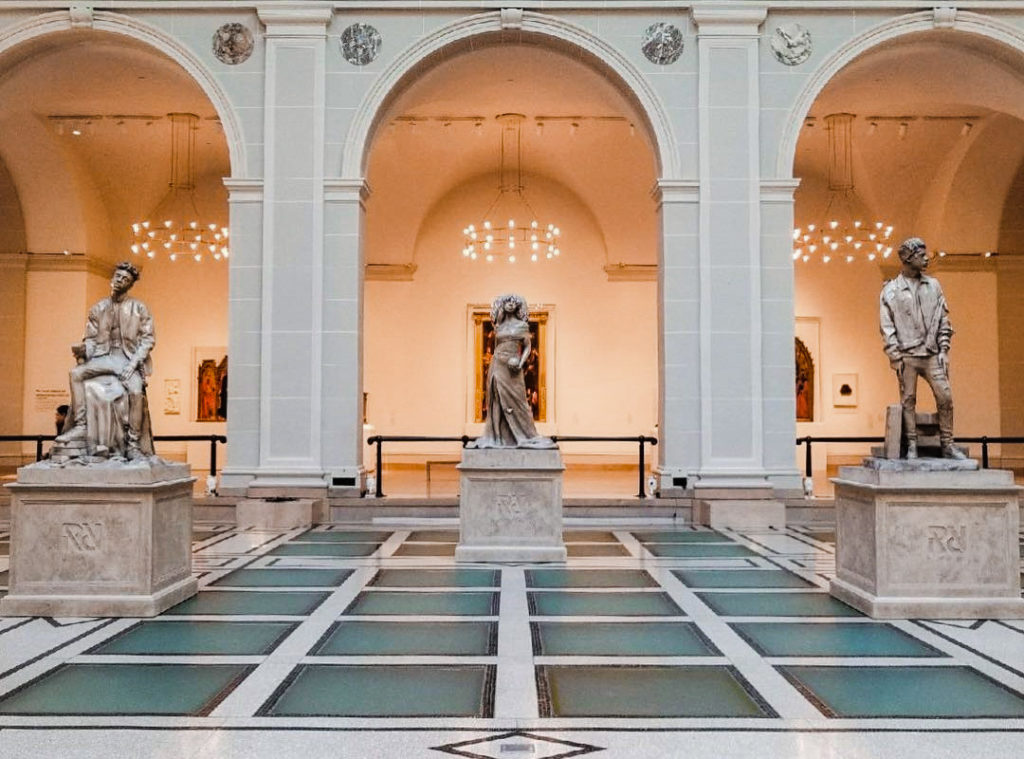
How to Make Sculptures With RoboDK
The processes for creating sculptures with RoboDK and robot milling follows the same basic steps as were followed to create the RapCaviar statues.
The steps are:
- Get a clean CAD model of the object that you want to sculpt.
- Generate the NC files such as APT or G-code using your favorite CAM software.
- Import these in RoboDK and use the robot machining wizard to create a robot path.
- Generate the robot program within RoboDK and then send it to the real robot.
- Press go! Then wait for the robot to mill the object.
- Finally, clean up your sculpture.
The process is simple but it is very powerful.
Which musical artists would you like to see immortalized with robot milling? Tell us in the comments below or join the discussion on LinkedIn, Twitter, Facebook, Instagram or in the RoboDK Forum.

